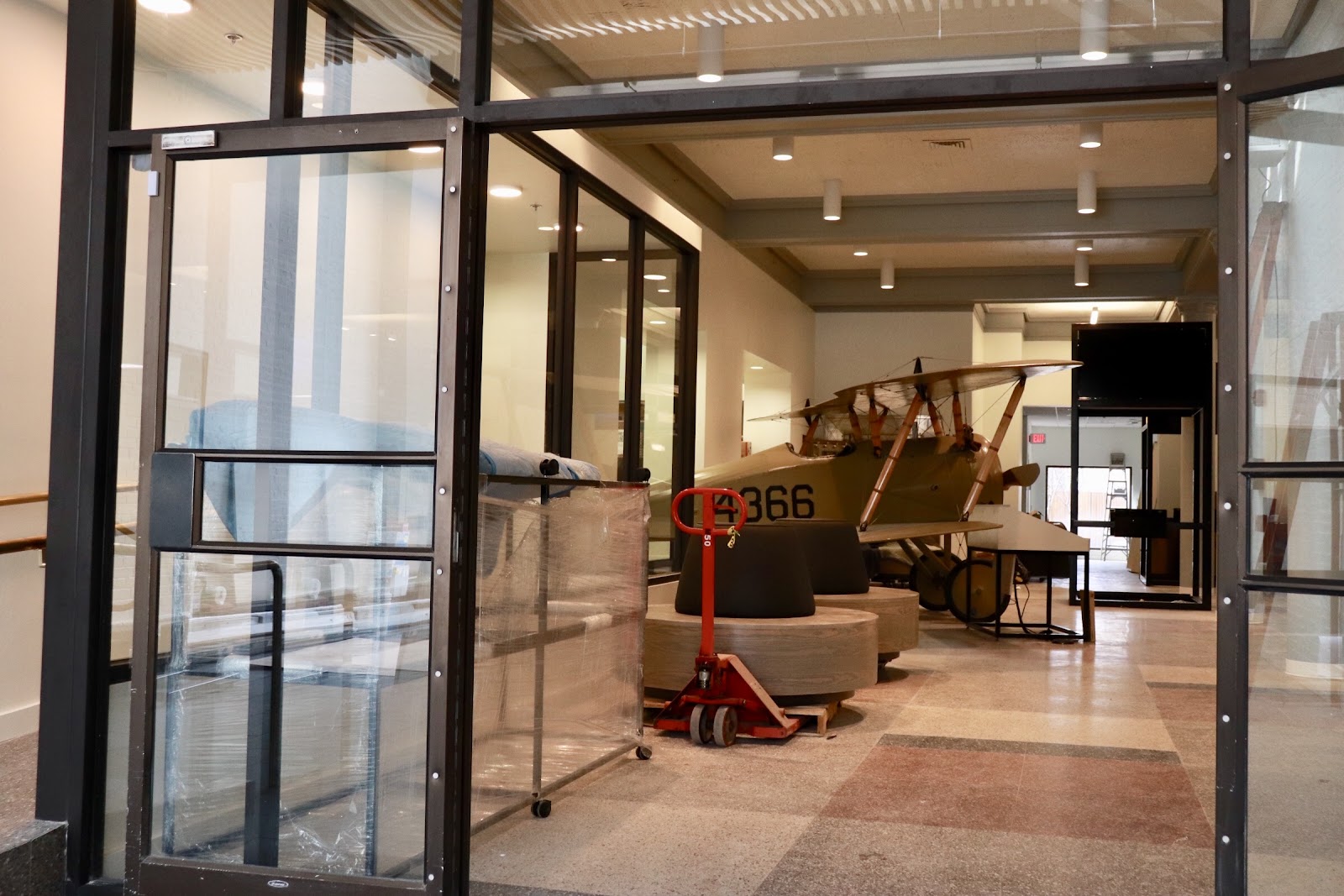 On March 16, I got a sneak peek at the new Tompkins Center for History and Culture where The History Center, is now located right in the heart of Ithaca’s Downtown Commons. The new Tompkins Center for History and Culture was designed to stimulate thought and create a lasting impression for its visitors.
On March 16, I got a sneak peek at the new Tompkins Center for History and Culture where The History Center, is now located right in the heart of Ithaca’s Downtown Commons. The new Tompkins Center for History and Culture was designed to stimulate thought and create a lasting impression for its visitors.
To prepare themselves for this new space, all twelve organizations who call this incredible refurbished building home: The History Center, the Tompkins Chamber, Cayuga Chamber Orchestra, Visit Ithaca, Wharton Studio Museum, Historic Ithaca, Community Arts Partnership, The Dorothy Cotton Institute, Discover Cayuga Lake, Ithaca Aviation Heritage Foundation, Discovery Trail, and the Christopher Community Planning Center, all played an important role in its redesign. I spoke with The History Center Executive Director Rod Howe about the The History Centers' role in the design process and how they will use the space. Rod Howe, Executive Director of The History Center told me that this new building will view the history and culture of Ithaca and Tompkins County as a P.L.A.C.E. (people, land, architecture, culture, and the environment).
The History Center in Tompkins County analyzed and adapted their collection interpretation. As part of the process, they asked themselves: Should there be an expectation for visitors to start at a certain point? Was there too heavy a concentration on facts and figures? Should the exhibition design be more open and have visitors leave not with all the answers but a lasting impression?

P.L.A.C.E. is reinforced in the main hall in five exhibit towers that use different communication styles to connect with visitors. Each tower concentrates on one part of P.L.A.C.E. and uses digital interactive screens, artifact displays, images and videos. The gallery has an open design that allows visitors explore based on their interests and choose how they approach the towers.
The space has revitalized and transformed a former bank building, but maintained elements of the original architecture. Its principal designer, Tessellate Studios, incorporated key architectural elements from the bank like using one of the vaults as a “story vault” to house Tompkins County oral histories. Visitors can record their own stories in this vault and listen to others. 
Part of the new exhibition space is the research library. It’s not tucked away on a different floor, or even behind a solid wall but on display as part of the exhibition and viewable through a glass wall that overlooks the main hall. This strategy not only lets people see in real time the research done by museum staff and volunteers, but lets visitors know that the library is accessible and open.
Yet, one of the most compelling parts of this new space wasn’t the incredibly technologically advanced towers but the acknowledgement and influence in the exhibition design of the Cayuga Nation.
The Cayuga Nation does not view time as linear. When designing a timeline for Tompkins County they also interpreted the history of the Cayuga Nation in a nonlinear form with images that reflect the people, land, architecture, culture, and environment of the Cayuga Nation.
The History Center will also observe a land acknowledgement at the beginning of events and gatherings. Land acknowledgment is an important way to show respect and move toward correcting the stories and practices that have erased Indigenous people’s history and culture by inviting and honoring the truth. It is usually a statement that acknowledges the traditional people of the land.
The Center isn’t expected to open until later this Spring, but touring the exhibition space and seeing it in its final construction stages provides a clear vision of their objective to create not only a destination but a gathering space for locals. It is a space that will open as the new home for twelve organizations: The History Center, the Tompkins Chamber, Cayuga Chamber Orchestra, Visit Ithaca, Wharton Studio Museum, Historic Ithaca, Community Arts Partnership, The Dorothy Cotton Institute, Discover Cayuga Lake, Ithaca Aviation Heritage Foundation, Discovery Trail, and the Christopher Community Planning Center. While all of these organizations will have their own offices, they will cohabitate in their events and gatherings in the exhibition space of The History Center. All twelve organizations contributed to the overall design and structure of how this building would be repurposed.
The History Center’s goal (along with the other organizations at the Tompkins Center for History & Culture) is to have visitors begin their Tompkins County experience here by stimulating thoughts that will linger throughout their trip and seek out other experiences. For locals, The History Center hopes to give ownership to its community as this new space becomes a gathering space and meeting point.
EDIT: A previous version of this article suggested that The History Center was the primary designer of the Tompkins Center for History and Culture but all twelve organizations that also contributed to the design and use.
Learn more about The History Center:
https://thehistorycenter.net/
Learn more about the Tompkins Center for History and Culture:
http://tompkins-center.net/
